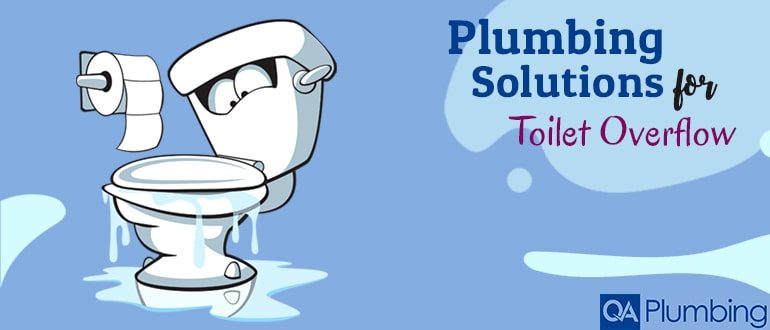One thing that you would never want to come across in your daily life is improper flushing of your toilet when you use it. But things just don’t go that way always, and there could be instances, where clogging of toilet do occur, worse still, it overflows.
The best thing that you want to see is to stop raw sewage from overflowing onto the bathroom floor; however, this is possible only if you have the knowledge of what should be done, and have the necessary tools with you. If you want to prepare yourself for the worst, this do-it-yourself can come quite handy.
Your First step
Irrespective of the cause of overflow in a toilet, the urgent thing that you want is to prevent water from flowing into the bowl. This could be achieved in many bathrooms with the main shutoff valve of the toilet. You could find a hand-crank valve somewhere along the water line that comes from the wall to the toilet. If this valve is not there, then it is likely present behind the wall or beneath the floor tiles, which makes it necessary to look for Plumbing solutions Mandurah to do necessary changes for making the valve accessible. Stopping the toilet valve is the safest way to completely stop overflowing of water in the toilet.
With a closed valve, you stop possible filling of the bowl that would give you enough time for clearing the clog. However, moving the valve could turn out to be quite a hassle when it really matters. This is because as the valve usually remains open for years, it could get sticky or even rust when it is present in the open air for long.
To get over this condition, turn the toilet valve back and forth a few times. If it refuses to budge, use a little lubricant till it starts moving freely. Make a habit of closing and reopening the valve whenever you plan to clean the bathroom. This action will take few seconds, but in the long run, it will help you close the toilet valve soon in an emergency.
Your Next Move
If the first step of closing the toilet valve fails, your next step would be to fix the problem inside the toilet tank. To go about it, remove the lid carefully and keep it aside. The next step is to check the flapper, which is a rubber disc present at the bottom of the tank to cover the hole there. If the flapper is found to be open, close it with your hand. This should be enough to prevent the flow of water.
If the flapper is found to be not open, or if it fails to close manually, look for the float ball. This ball floats on the water surface, and prevents water from filling at a specific level. To stop the water from overflowing, simply raise the float ball manually to the top of the tank. This could turn out to be quite a precarious situation if you are the only person at home. If water flows into the bowl on lowering the float ball, then you need to hold the ball in its place and work on the shutoff valve with the other hand. If this step fails, and you are unable to stop overflowing, it is high time that you contact reliable plumbing solutions in Mandurah.
The Final Step
Once you have stopped the overflowing, it is time to free the clog. Take a toilet plunger and clear the clog. If there is no plunger with you, it is important that you get one today. You don’t know when your toilet is going to overflow.
And if you are still unable to clear the clog, or to deal with other plumbing needs, the best thing that you should do is to contact a licensed plumber for your bathroom plumbing in Mandurah.





Comments 1
Ariel
January 25, 2019 |
Toilet overflowing is an unpredictable problem that can occur to anyone. While it may take time for the plumber to arrive, this blog has clearly enlisted the preliminary steps that one can do to control the situation. A very helpful read indeed!